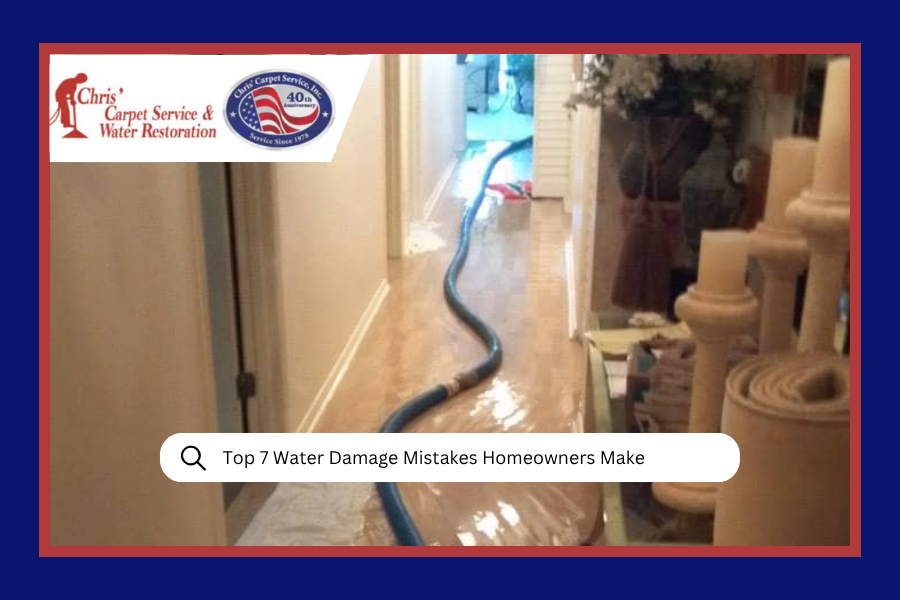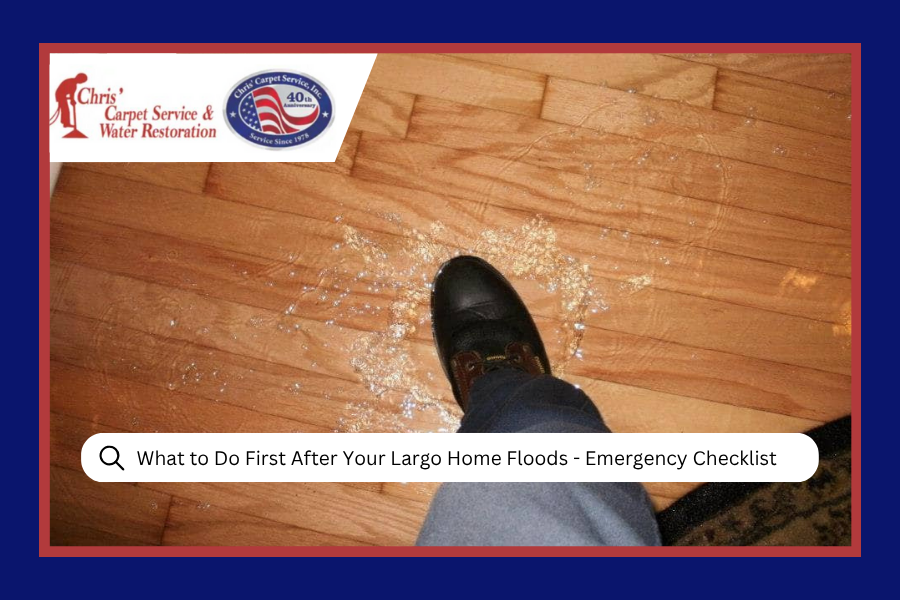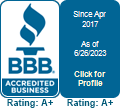Top 7 Water Damage Mistakes That Cost Tampa Bay Homeowners Thousands
Jump to Section:
- • Waiting Too Long to Call for Help
- • Thinking You Can DIY Major Water Extraction
- • Ignoring the Source While Focusing on Cleanup
- • Not Documenting Everything Before Cleanup
- • Leaving Wet Materials in Place "To Save Money"
- • Focusing Only on What You Can See
- • Skipping Professional Drying and Monitoring
- • Emergency Action Plan
- • Frequently Asked Questions
Picture this: you walk into your kitchen for your morning coffee and hear that dreaded sound – drip, drip, drip. Your heart sinks as you spot water pooling under the dishwasher. What you do in the next few minutes could save you thousands of dollars, or it could turn a manageable situation into a nightmare. At Chris' Carpet Service & Water Restoration, we've seen it all in our nearly 50 years serving the Tampa Bay area, and trust me, some mistakes are more costly than others.
Whether it's a burst pipe during a Florida thunderstorm or an overflowing toilet that decides to act up at the worst possible moment, how you respond to water damage makes all the difference. Let's dive into the seven biggest mistakes we see Tampa Bay homeowners make, and more importantly, how you can avoid them.
Mistake #1: Waiting Too Long to Call for Help
Time is absolutely not on your side when water damage strikes. We get it – nobody wants to admit they need help, especially when you're staring at a puddle and thinking, "I can handle this myself." But here's the thing: water doesn't take breaks, and neither does mold growth.
The magic number? 24-48 hours. That's how long you have before water damage becomes exponentially more expensive and complicated. According to the EPA's guidelines on mold cleanup , mold can start taking hold within this timeframe, and structural damage becomes more severe, turning what could have been a manageable cleanup into a major restoration project.
What to do instead: Call professionals immediately. At Chris' Carpet Service & Water Restoration, we answer our phones 24/7 because we know emergencies don't wait for business hours. Even if you think you can handle it, a quick consultation can save you from making expensive mistakes down the road.
Need immediate help with water damage?
Don't wait – every minute counts in water emergencies!
Contact us now for 24/7 emergency responseMistake #2: Thinking You Can DIY Major Water Extraction
Look, we're all for a good DIY project. Want to paint your living room? Go for it. Feeling handy with a leaky faucet? Have at it. But when it comes to extracting large amounts of water from your home, your household vacuum and a few towels aren't going to cut it.
Here in the Tampa Bay area, we deal with some serious water situations – from hurricane flooding to those intense afternoon thunderstorms that seem to dump half the Gulf of Mexico on our roofs. Professional water extraction equipment can remove hundreds of gallons per minute, while your shop vac might handle a few gallons before giving up.
The real problem: Hidden moisture. Even if you manage to soak up the visible water, moisture lurking in wall cavities, under flooring, and in other hard-to-reach places will cause problems later. Professional moisture detection equipment finds what you can't see.

Hidden water damage behind baseboards shows why professional moisture detection is crucial – what you can't see can cause the biggest problems.
Mistake #3: Ignoring the Source While Focusing on Cleanup
This one makes us shake our heads every time. We'll arrive at a home where the homeowner has spent hours soaking up water with towels, but the pipe is still leaking, or the toilet is still overflowing. It's like trying to empty a bathtub with a teacup while the faucet is still running full blast.
Your first priority should always be: Stop the source. Turn off the main water supply if you need to. Shut off electricity to affected areas if there's any risk of electrical hazards. Only then should you start thinking about cleanup.
Common Water Damage Sources in Tampa Bay Homes:
Appliance Failures
Washing machines, dishwashers, water heaters
HVAC Issues
AC condensate problems (huge in humid Florida)
Storm Damage
Roof leaks, window leaks during storms
Plumbing Issues
Toilet overflows, supply line breaks
Mistake #4: Not Documenting Everything Before Cleanup
In your rush to start cleaning, it's tempting to jump right in and start moving things around. But hold on – your insurance company is going to want proof of what happened, and "trust me, it was really bad" isn't going to cut it.
Before you move a single item:
- Take photos and videos from multiple angles
- Document water levels (use a ruler or measuring tape in photos)
- Make a list of damaged items with approximate values
- Take photos of serial numbers on damaged appliances
- Note the time and date of discovery
We work with insurance companies regularly, and we can tell you that proper documentation makes the claims process so much smoother. The families who take good photos upfront get their claims processed faster and with fewer headaches.
Mistake #5: Leaving Wet Materials in Place "To Save Money"
We get it – nobody wants to throw away perfectly good stuff. But leaving wet drywall, soaked insulation, or waterlogged flooring in place is like keeping moldy bread in your pantry and hoping it gets better.
| Material | Can Be Saved? | Why/Why Not |
|---|---|---|
| Drywall (wet >48hrs) | ❌ No | Loses structural integrity, mold growth |
| Insulation | ❌ No | Never fully dries, loses effectiveness |
| Hardwood Flooring | ⚠️ Maybe | Depends on water type and drying speed |
| Carpet (clean water) | ✅ Yes | Professional cleaning and drying |
| Particle Board | ❌ No | Swells and disintegrates when wet |
The Florida factor: Our hot, humid climate makes this even more critical. What might dry out acceptably in Arizona will become a mold factory here in the Tampa Bay area. We've seen too many homeowners try to save money by leaving wet materials in place, only to end up with extensive mold remediation needs later.
Mistake #6: Focusing Only on What You Can See
Water is sneaky. It flows downhill, seeps through tiny cracks, and travels along unexpected paths. Just because the damage looks contained to one room doesn't mean it actually is.
Water can travel:
- Through wall cavities to rooms that appear unaffected
- Under flooring to subfloors and beyond
- Into HVAC systems, spreading contamination throughout the house
- Into insulation, where it can sit undetected for weeks
Professional moisture detection uses thermal imaging and specialized meters to track moisture migration. We've found extensive damage in areas that looked completely dry to the naked eye.
Mistake #7: Skipping Professional Drying and Monitoring
"The fans are running, and it looks dry" – famous last words we hear way too often. Even if surfaces appear dry, structural elements like wood framing, concrete slabs, and subflooring can retain moisture for weeks.

Professional equipment and expertise are essential for contaminated water situations like sewage backups, which require specialized safety protocols.
Professional drying involves:
- Industrial dehumidifiers that can handle Florida's humidity levels
- Air movers strategically placed for maximum efficiency
- Daily moisture monitoring with professional-grade equipment
- Thermal imaging to verify complete drying
The IICRC (Institute of Inspection, Cleaning and Restoration Certification) sets the S500 industry standards for proper water damage restoration procedures, and skipping this step is like treating a fever with ice packs while ignoring the infection causing it. You might see temporary improvement, but the underlying problem will come back to haunt you.
How to Avoid These Mistakes: Your Emergency Action Plan
When water damage strikes your Tampa Bay home, here's your step-by-step action plan:
Emergency Water Damage Action Plan
- Stop the source immediately (shut off water, electricity as needed)
- Call professionals right away – don't wait to see "how bad it gets"
- Document everything with photos and videos
- Remove standing water if safe to do so, but don't attempt major extraction
- Move unaffected items to dry areas
- Start air circulation with fans if electricity is safe to use
- Contact your insurance company as soon as possible
Learn more about our emergency water damage response process here.
The Bottom Line
Water damage mistakes are expensive, but they're also preventable. In our decades of serving Tampa Bay families, we've seen that the homeowners who fare best are those who act quickly, document thoroughly, and know when to call in professionals.
Remember, we're not just talking about money here – we're talking about your family's health and safety. Mold growth from inadequate water damage cleanup can cause respiratory issues, especially for children and elderly family members.
The good news? You don't have to navigate this alone. At Chris' Carpet Service & Water Restoration, we're here to help Tampa Bay homeowners through every step of the water damage restoration process. From that initial emergency call to the final moisture reading, we'll make sure the job is done right.
Don't let a water emergency become a financial disaster. Check out our guide on common causes of water damage to help prevent problems before they start.
Frequently Asked Questions
How quickly does mold start growing after water damage?
Mold can begin growing within 24-48 hours in Florida's humid climate. This is why immediate professional drying is so critical – waiting even a few days can turn a water damage situation into a mold remediation project.
Will my homeowner's insurance cover water damage from appliance failures?
Most homeowner's policies cover sudden and accidental water damage from appliance failures, but coverage can vary. Document everything immediately and contact your insurance company as soon as possible. We work with insurance companies regularly and can help with the claims process.
Can I stay in my home during water damage restoration?
This depends on the extent of the damage and which areas are affected. For minor water damage confined to one area, you may be able to stay in unaffected parts of your home. However, extensive damage or contaminated water may require temporary relocation for safety reasons.
What's the difference between water damage restoration and flood damage restoration?
Water damage typically refers to clean water from sources like supply lines or appliances, while flood damage often involves contaminated water from storms or sewage backups. Flood damage requires more extensive safety precautions and specialized treatment protocols.







